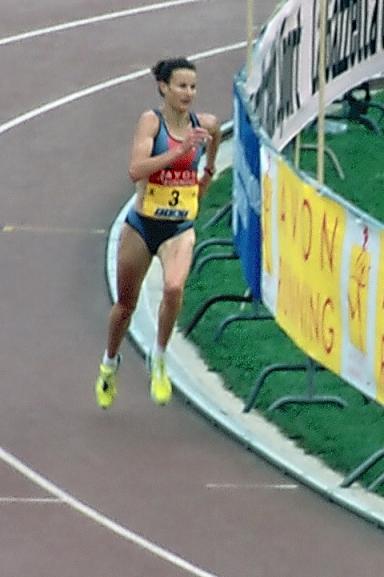As debates over fairness and inclusion continue to shape the world of sports, the question of how transgender athletes fit into competitive athletics has taken center stage. Recent research published in Frontiers sheds new light on the complex interplay between sex differences and athletic performance, exploring physical, physiological, and social factors that influence outcomes across the gender spectrum. This article delves into the latest scientific findings and their implications for policy, offering a nuanced perspective on where trans individuals stand in the evolving landscape of sports.
Understanding Biological Sex Differences in Athletic Performance
Biological sex differences significantly influence athletic performance, primarily due to variations in muscle mass, hormone levels, bone density, and cardiovascular capacity. On average, male athletes tend to have higher levels of testosterone, which contributes to greater muscle size and aerobic endurance, factors critical in many sports. Conversely, female athletes often exhibit advantages in flexibility and endurance in certain disciplines, emphasizing the complexity of these differences beyond simple binary distinctions. These physiological distinctions create categories in sports that aim to ensure fair competition; however, the evolution of understanding around sex and gender has brought new challenges to these traditional frameworks.
Recent research highlights the nuanced position of trans individuals within this landscape. For instance, hormone therapy commonly undertaken by trans athletes can modify muscle mass and strength over time, but the degree of change and its impact on performance varies considerably. Sports organizations are increasingly adopting policies informed by scientific data, focusing on hormone levels rather than simply sex assigned at birth to create more inclusive competitive environments. Key aspects under evaluation include:
- Testosterone thresholds: Establishing limits to balance fairness and inclusion.
- Impact of hormone therapy duration: Examining how long treatments take to offset physiological differences.
- Event-specific considerations: Recognizing that physiological advantages may differ by sport type and position.
| Factor | Typical Male Range | Typical Female Range | Trans Individuals (Post-Therapy) |
|---|---|---|---|
| Testosterone (nmol/L) | 10-35 | 0.5-2.5 | Below 5 (targeted) |
| Muscle Mass (%) | 40-50 | 30-40 | Variable, decreased after therapy |
| VO2 Max (ml/kg/min) | 45-55 | 35-45 | Starting near male range, often lowers post-therapy |
Evaluating the Impact of Hormone Therapy on Trans Athletes
Recent studies highlight that hormone therapy significantly alters key physiological factors associated with athletic performance in trans athletes. For trans women undergoing estrogen therapy and testosterone suppression, reductions in muscle mass, strength, and hemoglobin levels have been observed within the first year of treatment. However, many these changes do not completely align trans women with cisgender female performance benchmarks, leading to ongoing debates regarding fairness and competitive equity. Conversely, trans men often experience increased muscle mass and hemoglobin levels following testosterone therapy, potentially enhancing aspects of endurance and power output.
Key physiological changes influenced by hormone therapy include:
- Muscle mass and strength variations
- Alteration in aerobic capacity and hemoglobin concentration
- Bone density and joint biomechanics adjustments
| Physiological Marker | Trans Women (Post-Therapy) | Trans Men (Post-Therapy) |
|---|---|---|
| Muscle Mass | -10% to -15% | +10% to +20% |
| Hemoglobin Levels | Reduced to cis female range | Elevated to cis male range |
| Strength | Partial decline, often not equalizing fully | Marked increase |
Balancing Fairness and Inclusion in Competitive Sports
Current research highlights the complexity of maintaining both fairness and inclusion in competitive sports, especially when it involves trans athletes. Biological differences, such as muscle mass, bone density, and testosterone levels, undeniably impact performance across sexes. However, blanket policies often fail to capture the nuanced realities of individual athletes. Scientific studies suggest that hormone therapy and transition-related treatments can modify physiological advantages, but the extent and timing of these changes vary widely.
Key considerations for sports governing bodies include:
- Establishing evidence-based hormone thresholds that balance safety and equity
- Implementing sport-specific guidelines recognizing diverse performance determinants
- Respecting athletes’ rights while preserving competitive integrity
- Encouraging ongoing research to adapt policies with emerging data
| Factor | Impact on Performance | Effect of Transition | ||||||||||||||||||||||||||
|---|---|---|---|---|---|---|---|---|---|---|---|---|---|---|---|---|---|---|---|---|---|---|---|---|---|---|---|---|
| Testosterone Levels | Higher levels linked to increased strength and endurance | Reduced by hormone therapy, effect varies by duration | ||||||||||||||||||||||||||
| Muscle Mass | Generally greater in males, enhancing power output | Decreases after treatment but may not reach female averages | ||||||||||||||||||||||||||
| Bone Density | Contributes to injury resistance and leverage |
| Factor | Impact on Performance | Effect of Transition | |||||||||||||||
|---|---|---|---|---|---|---|---|---|---|---|---|---|---|---|---|---|---|
| Testosterone Levels | Higher levels linked to increased strength and endurance | Reduced by hormone therapy, effect varies by duration | |||||||||||||||
| Muscle Mass | Generally greater in males, enhancing power output | Decreases after treatment but may not reach female averages | |||||||||||||||
| Bone Density | Contributes to injury resistance and leveragePolicy Recommendations for Integrating Transgender AthletesPolicies surrounding transgender athletes must balance fairness with inclusion, a challenge that current research underscores with nuance. Experts advocate for evidence-based frameworks that consider physiological variables alongside the social dynamics of sport participation. Central to any effective approach is the implementation of clear eligibility criteria, incorporating factors such as hormone levels and transition timelines without compromising athletes’ privacy and dignity. Moreover, transparency and consistent enforcement across sporting bodies are essential to foster trust among all competitors. Recommendations emphasize collaboration between medical professionals, athletic organizations, and transgender communities to build respectful and scientifically sound policies. Key elements include:
|





